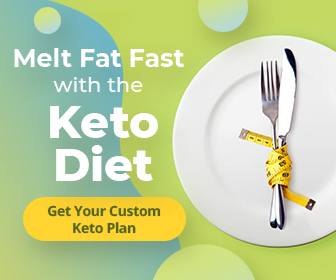The terms “keto” vs “low carb” are frequently used interchangeably, however they talk over with distinctive methods to nutritional regulations. Here’s a breakdown of the key differences between the two

“Disclosure: This site contains affiliate links, which means we may earn a commission if you make a purchase through these links. The products or services recommended on this site are ones that we trust and use ourselves. Your support helps keep this site running. Thank you!”
Within every weight loss plan, there are often little variations that can turn the plan into a whole new type of diet. That’s the way it is with low carb vs keto. Whenever you begin cutting carbs, your body doesn’t store them as fat and uses body fat instead as your fuel!
Entering the Ketogenic Phase
The more you cut down, the faster the weight melts off. There comes a point when you get to the ketogenic phase – which, for some people means 30 carbs or less, and for others, means 20 carbs or less.
Managing Carb Intake
During the ketogenic phase, your body is burning lots of fat as fuel. Every time you add more carbs, it gives the body carbs to burn instead of fat. So you’ll want to manage your carb intake according to however much weight you have to lose, and how fast you want to lose it.
Flexibility in Low Carb
With low carb, you have more freedom and flexibility to have some of the foods you want – such as fruit or starchy carbs like potatoes. But you’ll still want to be vigilant about the maximum number of carbs you allow into your diet.
Stricter Choices in Keto Dieting
With keto dieting, the number gets slashed, so you’ll have to be pickier about where your carbs come from. For example, you might really want bar-b-que chicken, but you’ll get sugar free sauce to coat it with so that you don’t blow all your carbs on a few chicken tenderloins.
Smart Shopping for Low Carb vs Keto
If you know you want to enjoy tacos, you can shop for things that allow you to cut down on carbs and stay within a low carb vs keto diet plan. Instead of taco shells made from corn, you could choose a Carb Balance tortilla with just 4 net carbs.
Weight Loss Speed and Cravings
Low carb is a bit easier for most people to pursue, but it doesn’t help you shed the weight as fast. You also might experience more cravings for things like sugar, because a keto diet tends to eliminate them due to the satiety of the full fat you enjoy.
Personalized Tracking for Ketosis
Because every person is different when it comes to what puts their body into ketosis, you’ll need to track your body to see if you get into ketosis at different levels of carb intake. That way, you’ll know what amount of carbs would kick you out of ketosis, too.
You can measure using keto trackers that use your urine sample, blood or even your breath. You’ll have to get into ketosis little by little to see what level it takes to get you there and then add a bit here and there to see how many carbs your body will allow and still have you in ketosis.
Key Takeaways:
Keto Diet
- Intense Carb Restriction: Keto involves a very low carbohydrate intake, typically 5-10% of total daily calories.
- Specific Macronutrient Ratios: The diet emphasizes high fat (70-75%) and moderate protein (15-20%) consumption for the induction and maintenance of ketosis.
- Focus on Ketosis: The primary goal is to achieve and sustain a state of ketosis, where the body burns fat for energy, producing ketones.
- Selective Food Choices: Keto-friendly foods include meats, fish, eggs, dairy, oils, and low-carb vegetables, with strict avoidance of high-carb items like fruits and grains.
Low Carb Diet
- Moderate Carb Restriction: Low carb focuses on reducing overall carbohydrate intake without the extreme limitation seen in keto.
- Flexible Macronutrients: Unlike keto, there are no specific macronutrient ratios, providing flexibility in the distribution of fats and proteins.
- No Requirement for Ketosis: The primary aim is not to induce ketosis, but rather to manage blood sugar levels, control insulin response, and facilitate weight loss through reduced carb intake.
- Diverse Food Options: Low carb allows for a wider range of food choices, including some fruits and higher-carb vegetables in moderation, making it a more flexible long-term approach.
Summary
- Carb Intake: Keto involves very low carbs (5-10%), while low carb focuses on moderate carb reduction without a strict percentage.
- Macronutrients: Keto prescribes specific fat and protein ratios, while low carb allows for more flexible macronutrient distribution.
- Goal: Keto aims for ketosis and efficient fat burning, while low carb focuses on carb moderation without the necessity of ketosis.
- Food Choices: Keto restricts certain high-carb foods strictly, while low carb allows for a broader range of choices within carb moderation.
Conclusion
In the world of weight loss, understanding the nuances among keto vs low carb is pivotal. The preference between the two relies upon on personal preferences, weight loss desires, and the desired level of carb restriction. Whether opting for the ability of low carb or the fast weight loss of keto, the key lies in aligning the selected technique with man or woman health objectives.










